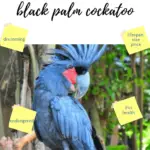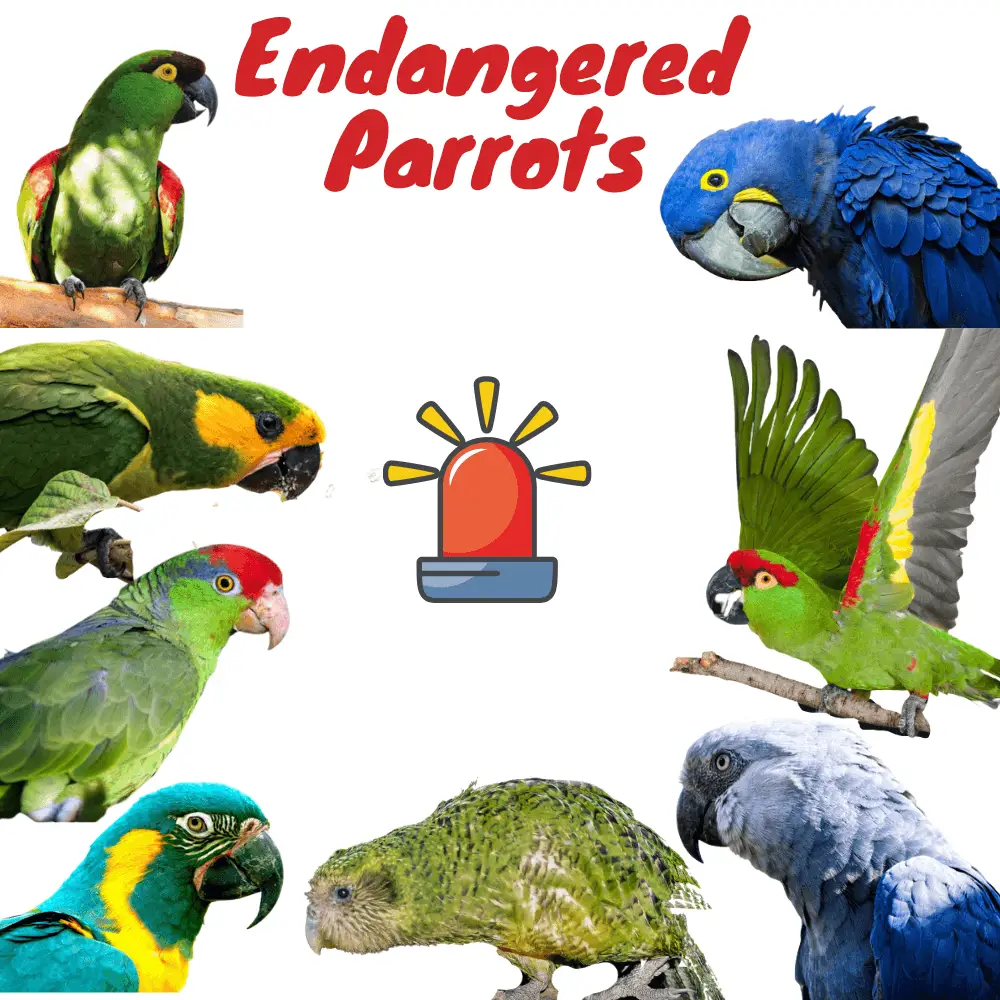Endangered Parrots: The risks weighing on Psittacidae Endangered Parrots Nowadays, it seems obvious that many species, animal or vegetable, are in danger of extinction.
The most famous are obviously elephants, rhinos, and other large mammals, but the IUCN (International Union for the Conservation of Nature) constantly reminds us that behind these well-known species are often hidden many other endangered or threatened species. ‘be.
Created in 1948, this Union of Members is composed of both governments and public or private organizations and aims to promote solutions to reconcile the development of human activity and the environment (SCHULMAN 2015).
To do this, one of its missions is to assign a status to the largest number of species or ecosystems according to the threat to it or its environment. These statutes are summarized below:
The risks weighing on Psittacidae Endangered Parrots

- NE: Not Evaluated
- DD: Data Deficient
- LC: Near Threatened
- VU: Vulnerable
- EN: Endangered
- CR: Critically Endangered
- EW: Extinct in the Wild
- EX: Extinct
Are parrots endangered
Yes this is the list of the endangered Parrots
- Blue-Throated Macaw
- Green-Checked Amazone Parrot
- Yellow-Eared Parrot
- Kakapo
- Sun Conure
- Hyacinth Macaw
- Spix’s Macaw
- Marron-fronted Parrot
- Buffon’s Macaw
- Thick-Billed Parrot
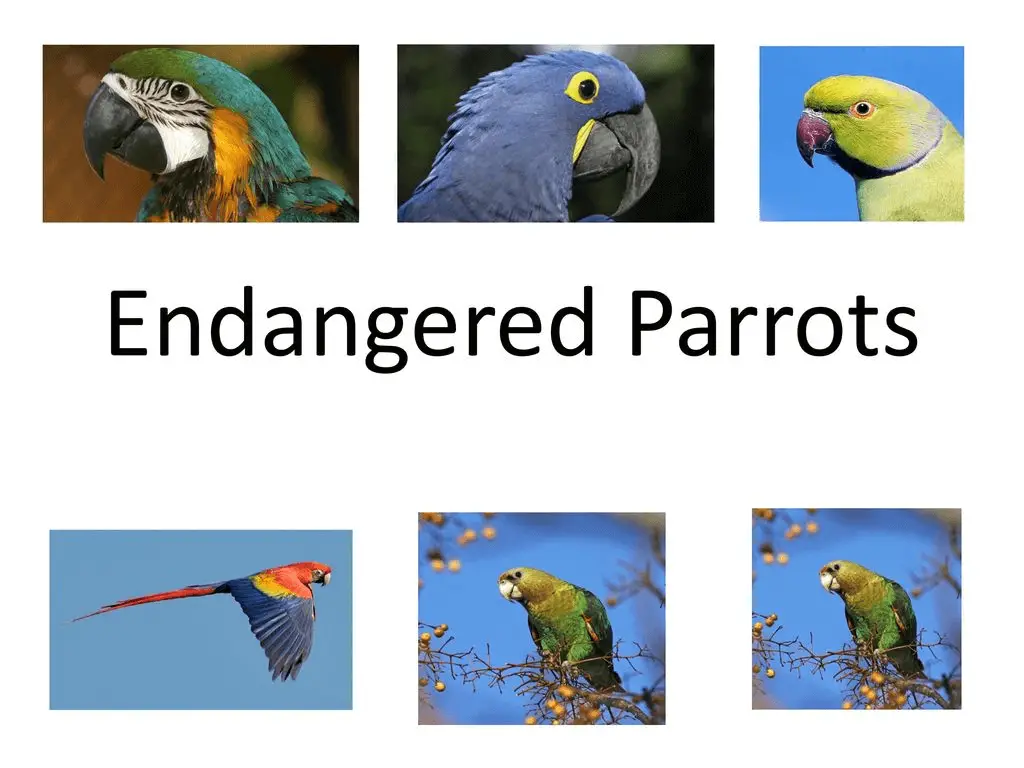
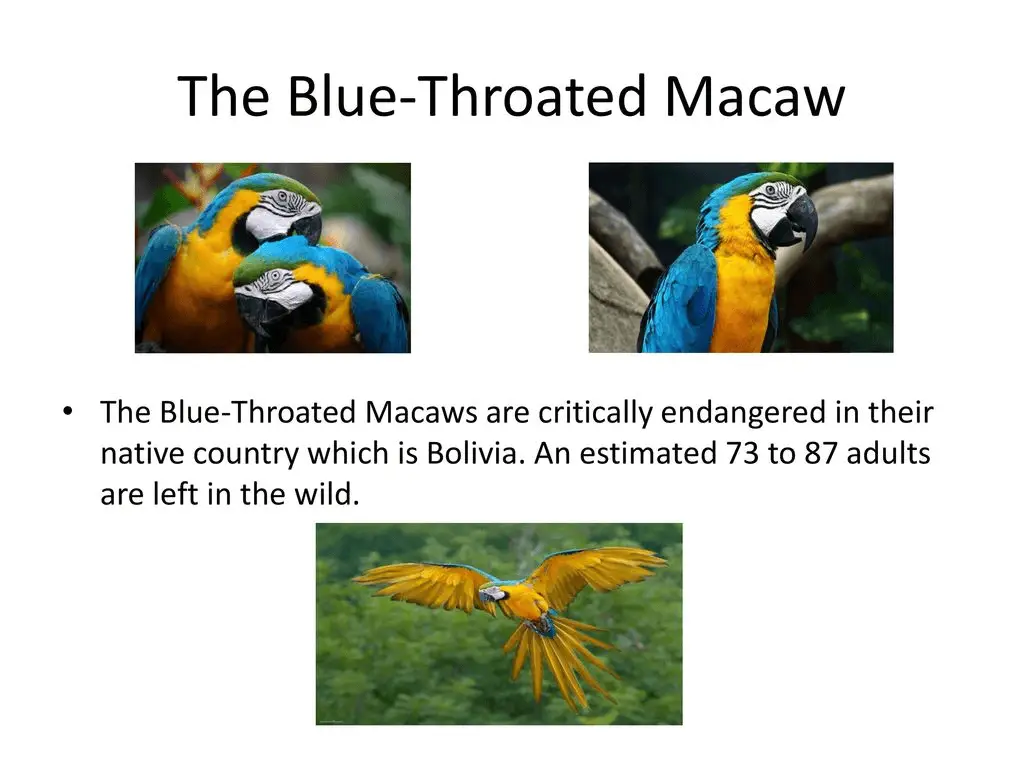
The Blue-throated Macaw

Green-Checked Amazon Parrot
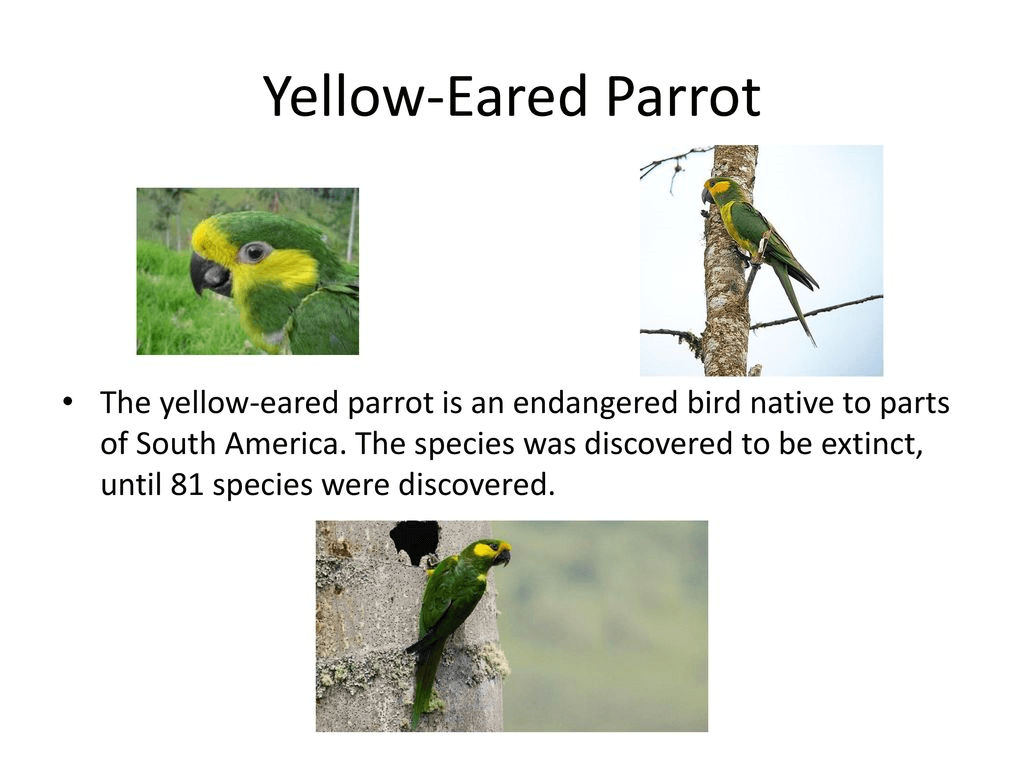
Yellow-Eared Parrot
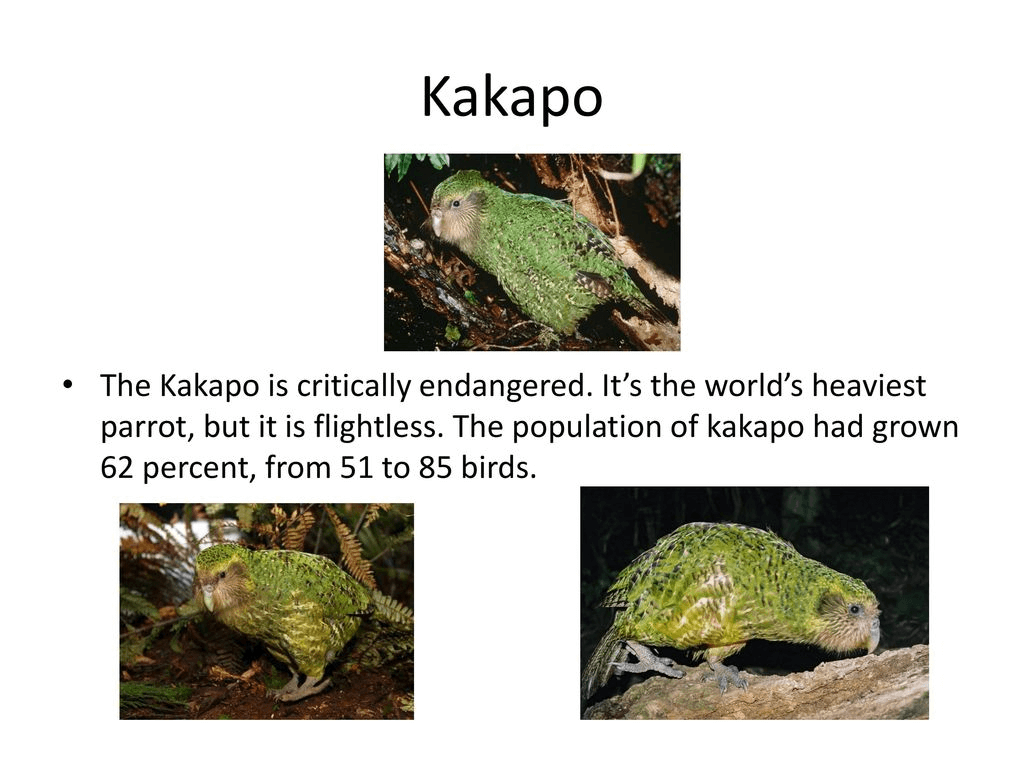
Kakapo
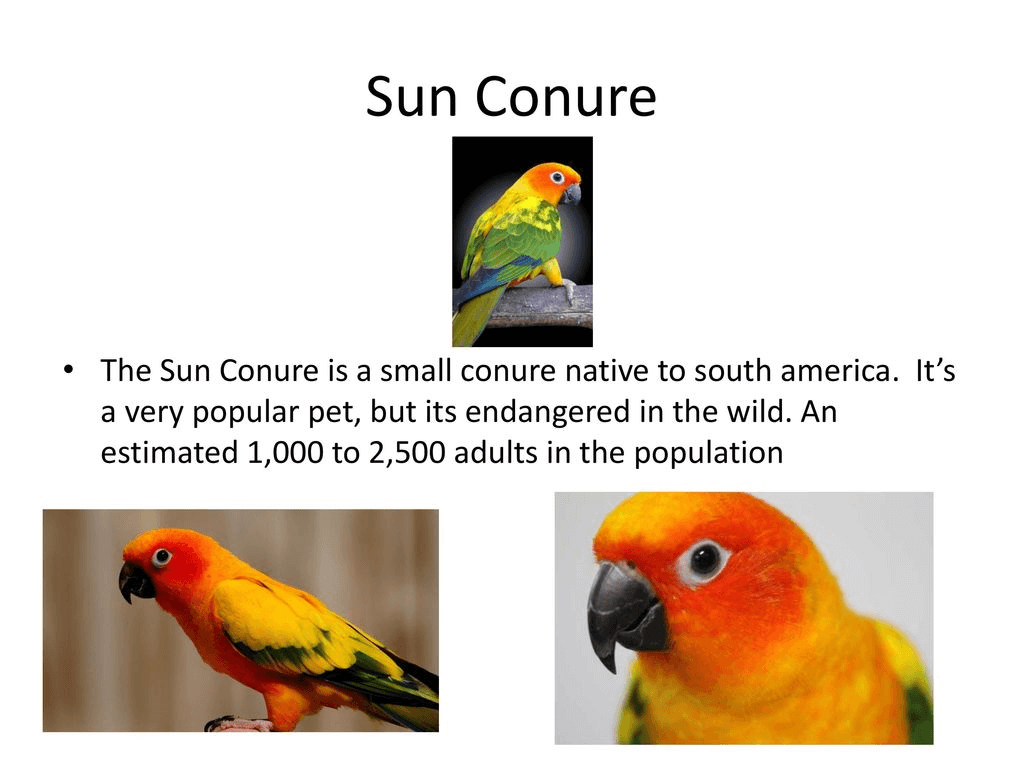
Sun Conure
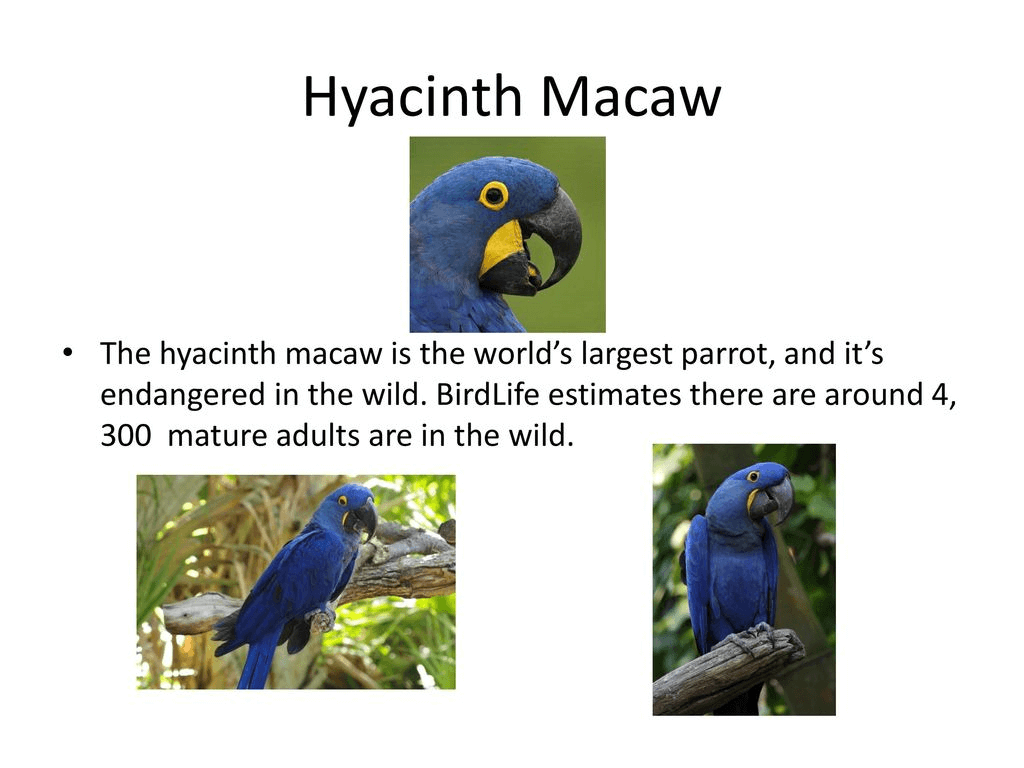
Hyacinth Macaw
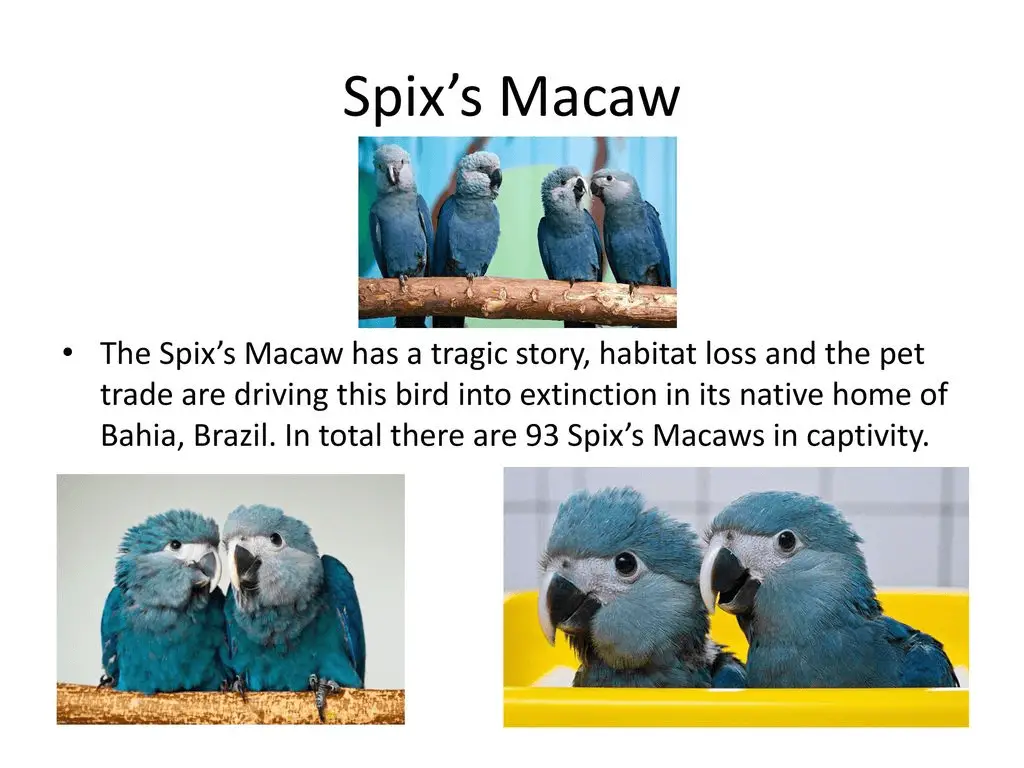
Spix’s Macaw
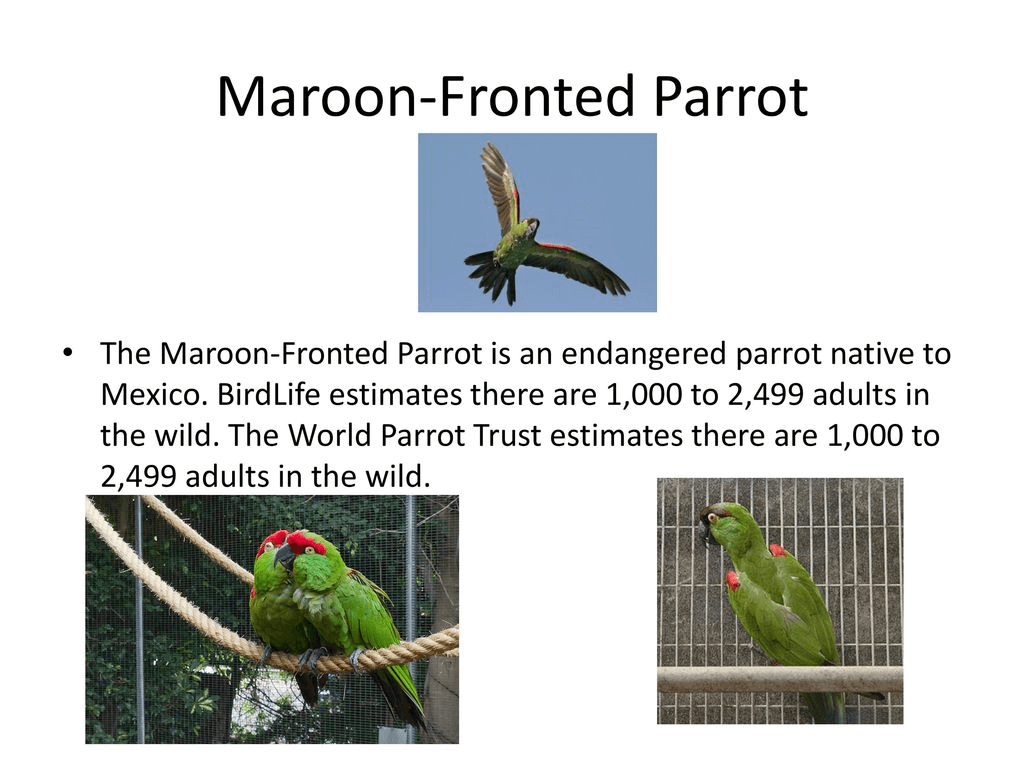
Maroon-Fronted Parrot
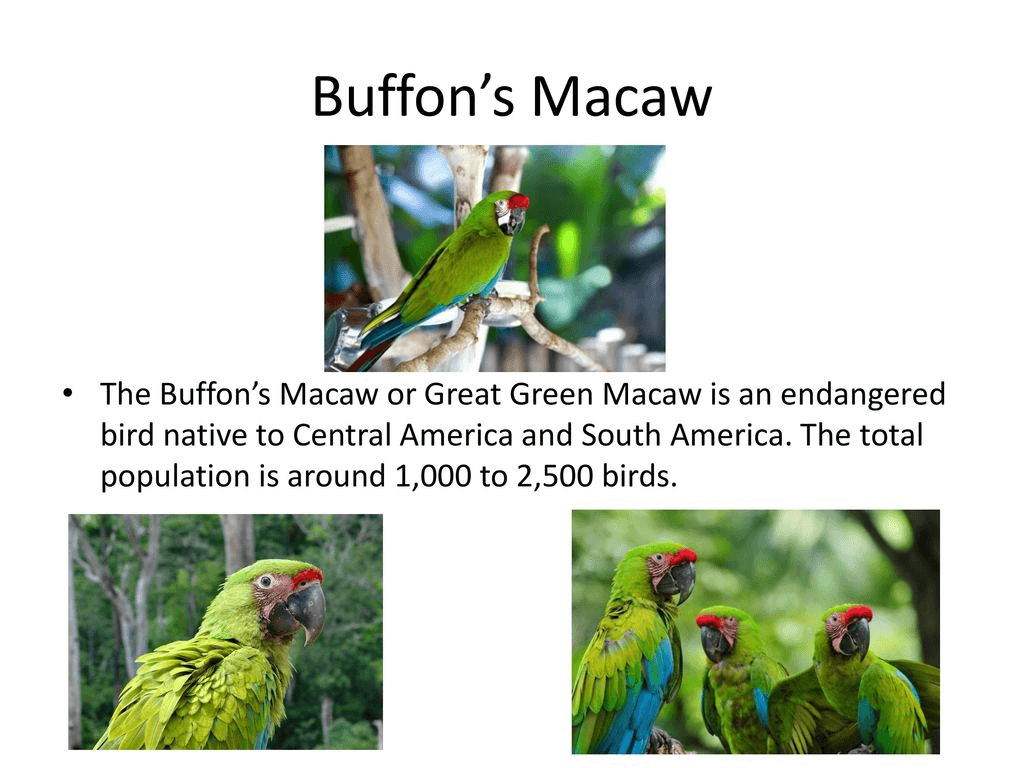
Buffon’s Macaw
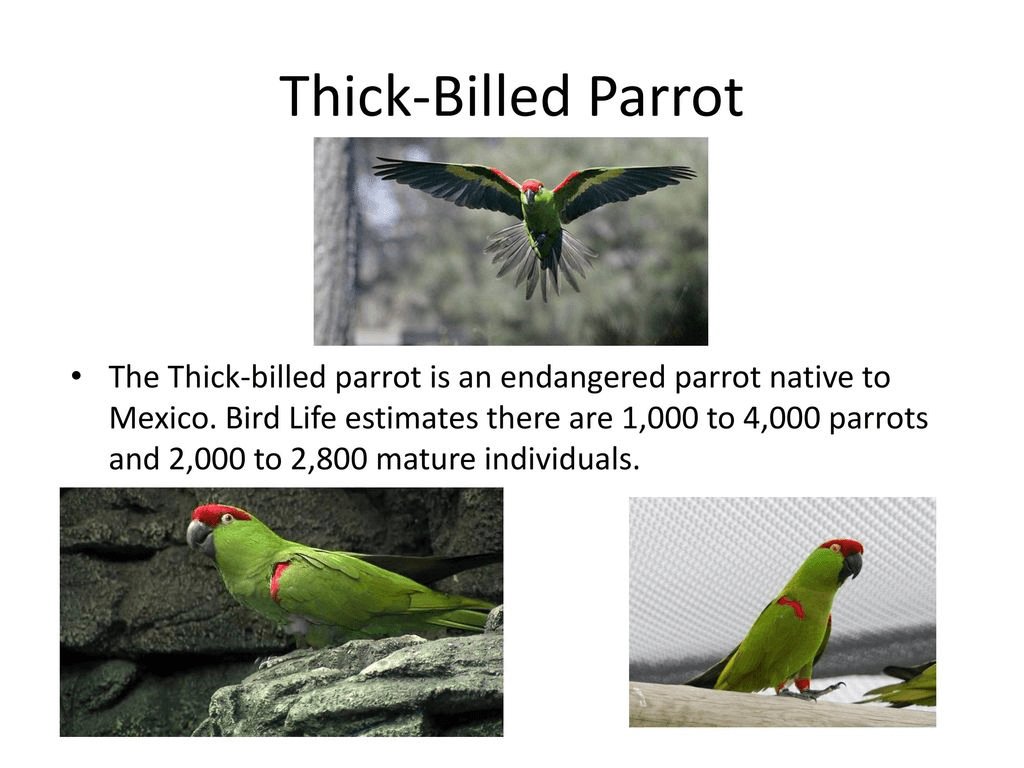
Endangered Parrot
SOURCE:National Geographic
Endangered parrot relative
Thus, the IUCN status of each species is a clear and accurate indicator for all on the status of each species at the global level.
Many organizations (including the UN and some governments) use these statutes as a basis for building their regulations for the protection of species and ecosystems.
Nevertheless, it is important to keep in mind that even if a species now belongs to the LC or NT categories, its fate can switch very quickly to a more severe status, due to new threats to it or its ecosystem (related to human activity or not) (IUCN 2015).
Currently, the majority of parrots are not considered at risk since most Psittaciformes have a status of “Low Concern” (= LC) to “Near Threatened” (= NT), often because populations benefit from a very large number of individuals in preserved habitats or with little threat.
Nevertheless, some species like Kea (Nestor notabilis) have a Vulnerable status (= VU) due to declining populations (The IUCN Red List of Threatened Species 2012 – Nestor notabilis 2012).
Thus, the Kea illustrates the fact that it is imperative to protect the Psittaciformes, and this on a global scale. Fortunately, the community International has been able to react and put in place laws to preserve exotic animals, including Psittaciformes.
Internationally: CITES
CITES (also known as the Washington Convention) is an international interstate agreement aimed at ensuring that the trade of animals and plants, as well as specimens (furs, roots, feathers, etc …) in no way, threatens the survival of the species to which they belong.
Adopted in Washington in 1973 in the presence of representatives of 80 countries (including France), the convention now protects more than 35,000 species at different levels corresponding to the three appendices of the Convention.
The provisions of CITES concern the animals or plants listed in the various appendices (live or dead specimens), and the products derived therefrom or containing them (in the case of Psittaciformes: feather jewelry …).
CITES states that any signatory country undertakes to permit trade in specimens of the species listed on each Appendix only in accordance with the provisions of the Convention (CITES 1973) (see Table 2).
Note: Because of the massive traffic they suffer, wild populations of Gray Gabon (P. Erithacus) have greatly decreased in the last five years in Gabon, Chad, and Angola (disappearance of up to 90% of individuals in some regions).
In response, CITES responded at its 17th Conference of the Parties (October 2016) by including these parrots in Appendix I (instead of Appendix II to date).
This convention is therefore constantly evolving to better respond to the situation of each threatened species (CITES CoP17 2016). Nevertheless, CITES has not yet decided the fate of Gabonese grazing livestock.
The international trade in wildlife is therefore particularly framed. Unfortunately, for lack of means to control the application of these regulations, parrot trafficking is still regularly updated by the authorities as in 2015 when the Indonesian police seized 24 Sulfur Cockatoo (Cacatua sulphurea) enclosed in empty plastic bottles to pass the customs illegally.
CITES, therefore, establish a strict international framework regulating trade in species in order to ensure their survival. This Convention also allows each signatory country to propose the addition of species to the Appendices according to the welfare of the species in their territory.
Thus, these countries are actors of the conservation of the species living on their territory which constitute at the same time a heritage, but also biodiversity. In order to respect this international framework, the signatory countries have also adapted their legislation, as have the European Union and France.
At the scale of the European Union
In order to protect the biodiversity of the European Community and to rule on species not mentioned by CITES, the European Union has put in place stricter legislation than the international convention, even though it relies heavily on it.
Indeed, Council Regulation EC No 338/97 on the protection of species of wild fauna and flora through the control of their trade and amended by Commission Regulation (EU) No 1320/2014 of 1 December 2014 (Official Journal of the European Union 2014) classify threatened species of fauna and flora according to four annexes (A, B, C, and D) according to the threats to them (Appendix A includes the most protected). Annexes A, B, and C generally correspond to CITES Appendices I, II and III, although small differences exist (for example, the genus Vini is listed in Appendix A whereas only Vini ultramarine is in Appendix I of CITES). CITES, the rest in Annex II).
Psittaciformes are all grouped in Appendices A and B.
Appendix D includes species not listed by CITES but for which the European Union wishes to know the import flows to the different member states.
The import and export of the species listed in Appendix A are prohibited except derogation whereas those for the species of Annex B are subject to export and import permits. For Annex C species, only an import notification to the EU is required (sometimes accompanied by an export permit depending on the provenance of the specimen).
Finally, for specimens listed in Annex D, a simple declaration to the customs at the time of entry into the European Community is sufficient.
Thus, transit through an EU member country of a specimen classified among one of these appendices will be done under certain strict and well-defined legal conditions by the European Community (Regulation applicable to endangered species of wild fauna and flora). extinction (Ministry of Finance and Public Accounts 2015)).
This regulation makes it possible to control the impact of trade on wild species, but also the respect of health standards at the entrance of the EU.
SOURCE:ABC Science
On the French scale
Since 1976, France has put in place laws to protect its fauna and flora, especially in French Guiana. The Order of 25 March 2015 setting out the list of birds represented in the Department of French Guiana protected throughout the territory and the terms of their protection stipulate inter alia that (Ministry of Ecology, Sustainable Development and Energy and the Minister of Agriculture, Agri-Food 2015):
Are prohibited throughout the territory of the department of Guyana and at all times:
- destruction or removal of eggs and nests;
- The destruction, mutilation, capture or removal of birds in the natural environment;
- Intentional disturbance of birds especially during the breeding and dependence period provided that the disturbance calls into question the successful completion of the life cycles of the species in question. “
In France, a person with a parrot must be able to justify, at any time, the legality of this detention through a certificate of ownership accompanied by a traceability sheet.
This certificate covers only one specimen and is issued in France by the DREAL (Regional Directorate for the Environment of Planning and Housing). It is not transferable and must, therefore, be renewed at each change of ownership (Ministry of Finance and Public Accounts 2015).
The Guiana Decree is completed by:
- The Order of 10 August 2004 laying down the conditions for authorizing the keeping of animals of certain non-domestic species in breeding, selling, renting, transit or displaying to the public of animals of species non-domestic (Ministry of Agriculture, Food, Fisheries and Rural Affairs and the Minister of Ecology and Sustainable Development 2004). This Order determines the conditions for marking birds and stipulates that parrots must be provided with an “individual and permanent marking […] made within 1 month of birth” (ring or microchip).
- The Order of 24 March 2006 amending the amended Decrees of 17 April 1981 establishing the lists of protected birds throughout the country and of 15 May 1986 modified fixing all or part of the national territory measures for the protection of birds represented in the Department of Guyana (Ministry of Agriculture and Fisheries and the Minister of Ecology and Sustainable Development 2006). Here, the text states that “the prohibition of carriage, peddling, use, offer for sale, sale or purchase, provided for [by the Guiana Decree] does not apply to specimens born and bred in captivity and marked in accordance with the provisions laid down by order of the Minister for Nature Protection and the Minister for Agriculture. “
The legislation surrounding the holding of Psittacidae is therefore very strict and it is essential that the veterinarian be aware of it in order to inform the owners as well as possible.
However, the classification of species in the appendices of the legal texts and the laws themselves are regularly modified. It is therefore advisable to approach the competent authorities in case of doubt in order to guarantee the owners the strict respect of the legal framework.
Application for the owner
Before choosing a bird, the future owner must ensure that he has the right to own such a species and that it has not been illegally imported into the territory. The day of the purchase, it must imperatively receive a certificate of transfer mentioning:
- Full contact details of the seller and the buyer.
- The common (in French) and scientific (Latin) names of the parrot species.
- The bird identification number (ring or electronic transponder).
- In the case of import: the CITES bird number and an international health certificate.
3) Birds encountered most frequently in consultation
The species of Psittaciformes presented in this section are those met most often in metropolitan France in individuals or in zoos (according to personal observations).
The Psittacidae will be presented at first, followed by the Cacatuidae. Each information sheet summarizes the characteristics of the species (longevity, size, phenotype, place of life, etc.) and provides information on the legal status of the species.
All these sheets have been produced using the Jobling and Helm’s scientific names dictionary (JOBLING 2010), the Encyclopedia of Poultry (HOLLAND 1962) and the IUCN listing for each species in its red list. Threatened Species (IUCN Red List of Threatened Species) (IUCN 2012).

